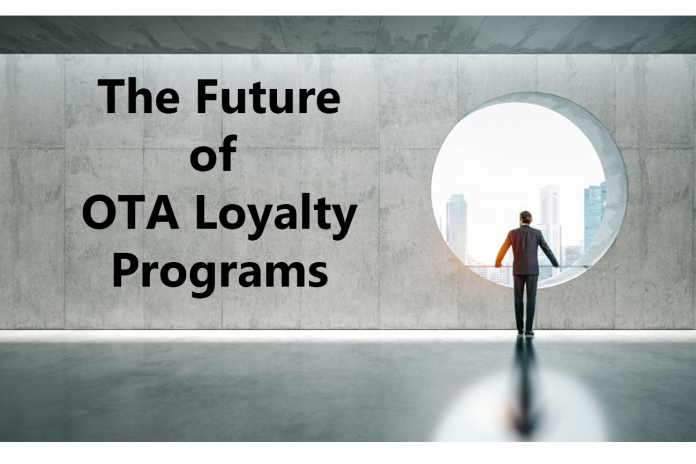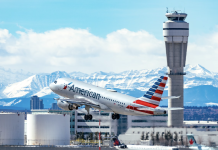
Online Travel Agents (OTAs) are known as an efficient distribution channel for hotel rooms, but with more major hotel brands pushing direct bookings to reduce commissions paid out to agents- this leaves OTAs searching for the next goldmine product to fuel their continued growth.
With this in mind – for years – hotels have enjoyed a non-competitive landscape with their loyalty programs by essentially ring-fencing their guests into the scheme by not offering elite benefits and points if the room was booked through a third party distribution channel such as an online travel agent. This has had a side effect whereby hotels lose high-value guests if they book a room through the ‘wrong’ channel.
While this strategy of not awarding loyalty benefits to guests for booking through the non-preferred channel has some logic around OTA commissions being so high – it’s not worth alienating important guests all because they committed some crime for not booking through the preferred channel of the hotel. After all – it’s not the guests’ problem if the hotel made a sub-optimal deal with the OTA. The guest wants to stay at your hotel, and an OTA may have communicated the right message to the customer at the right time to win the booking – and the hotel loyalty program penalises this otherwise loyal guest!
In an effort to boost loyalty member numbers, we see hotels shell out free status like candy through status matches – and partnerships with banks & businesses become more common. This flooding of the market with elite status has an underlying effect of locking in more guests/corporates into direct booking channels while educates these potentially guests not to book through online travel agent websites.
The problem this poses for OTAs is that their high-frequency customer base is being plucked out one by one from under them as hotel loyalty programs move to put on the golden handcuffs to more and more travellers by offering cheap and easy elite status. These moves have created a cheap customer acquisition for hotels and kills off otherwise potentially high-value customers for OTAs in the process.
OTAs already have a strong reputation for having the lowest rates – and despite what major hotels are trying to tell the world – it can still be cheaper to book through an OTA under the right circumstances. However as hotels move to compete on the battle ground which OTAs are known for (best pricing), this opens a new, larger and lucrative opportunity for OTAs to move in on the hotel’s traditional turf – loyalty programs.
How can OTAs compete against hotels in the loyalty program space? After all – they own no hotels, and all inventory has a direct cost if giving away nights compared to a near nil cost for a hotel. This takes free nights off the table as a loyalty play, right?
Currently – OTAs are addressing loyalty by offering diverse types of discount programs. These play well with the traditional OTA user base who are price conscious and looking for great deals. The most well-known programs today are:
- Expedia Rewards: up to 2 points per $1 USD
- Hotels.com: Stay 10 nights, get 1 free.
- Orbitz Rewards: Earn $1 Orbuck for every $1 USD spent.
- Rocketmiles, Kaligo, Agoda : No program, but earn airline miles of your choice
- Many others are the US only and tied to credit cards – which locks you in to their brand as you generate points and make money for the OTA even when you’re not booking flights and hotels.
While these programs have their place and no doubt encourages a set demographic to remain loyal to their booking channel – they won’t be the loyalty programs of the future. OTAs will need to pack more ammunition in their arsenal to take on the hotels at the game of loyalty.
The current OTA programs revenue benefit isn’t derived from banks (as is typical with hotel chain loyalty programs), there is a distinct lack of gamification, and there is no halo effect on the hotel brand which drives new bookings. As these programs act as discount models – they are effectively training users to buy and act on price alone. Now that major hotel chains are moving in on the price war by stepping up marketing and awareness around rates; OTAs will need to put their creative caps on to dream up new ways of capturing the price conscious traveller.
The second your customers are trained into buying for discounts alone – you’ve educated them always to go for the lowest price. When the next competitor (or hotel chain) comes along with a lower price offering – your discount program becomes worthless as the customer will transact through whatever channel is most cost effective.
So while this may have an immediate appeal to many travellers, it’s not exactly fostering a culture of genuine brand loyalty to the OTA.
What makes a good loyalty program? To understand the fundamental benefits and business metric drivers of a loyalty program, we first need to recognise the basic principles which successful travel loyalty programs are based upon:
1) Subjective and aspirational rewards
Successful loyalty programs don’t sell repeat business – they sell the dream – and a better version of you.
Typically in a hotel program, you earn points which contribute towards free nights. A free night at a run-down business hotel isn’t all that enticing which is why the material is promoting the program centres around relaxing pools, spas and activities at destinations you’ve only dreamed about. In your mind, the redemption value compared to cash price for the same room has a large difference, thus creating a high perceived value for each point. This works well under the thinking of ‘stay at business hotels all year and get rewarded with a free stay at a luxury resort’.
The psychology behind this operates under basic gaming mechanics by serving a dual purpose of offering aspirational rewards and bringing high perceived value to the points/currency of the hotel.
2) Status levels and tiers
These provide soft tangible benefits to those holding elite status – and the only way to take advantage of the advantages is to book another trip with the hotel chain.
This has the additional benefit of placing the brand the consumer has status with at the front of mind, knowing the next booking comes with additional benefits and VIP access to facilities that otherwise would come at a financial cost.
While the cost to the hotel chain is minimal to provide these perks – the value provided to the consumer can be of such high importance, that the price of the transaction becomes largely irrelevant.
OTAs don’t own any planes or hotels – so how can they create a newer, better loyalty program which doesn’t fall back on discounting? How can OTAs create a loyalty program that doesn’t act as a cost centre, but rather as a revenue driver to unlock new revenue channels while also increase stickiness and brand loyalty to their product – rather than to individual hotels?
While I believe there are many answers each with their own merits – one golden solution OTAs could use to exploit the plethora of data available at their fingertips.
Major hotels chains are largely living in the stone age when it comes to using data to create new revenue. The big hotels are potentially losing billions in lost revenue by not using their data effectively to drive new sales, increase RevPAR and fill rooms. StayAngel is one such example of how Hilton is losing millions annually from inefficient use of data. OTA’s on the other hand – have at their fingertips – terabytes of goldmine opportunities and are poised to take full advantage of their position of power.
OTAs have a unique position of knowing every hotel a guest will make a booking with, they are brand agnostic, and this enables greater visibility into booking behaviour. From this, the opportunity lays within knowing what type of hotels, at what price point, in which location, when they’re booked, how, from what micro-demographics and map this out to understand what the top customer profiles for each location looks like. They know when your flight arrives, how much you paid for the trip, what you might be willing to pay for other services based on similar profiles to yours and also track the other side of the scale. Plotting this business intelligence out could show an interesting loyalty composite score not available to airlines or hotels. This data architecture would then allow for more accurate insight on spend and loss probability of new business, market trends and segmented consumer traits.
So while OTAs may be feeling the pinch over the book direct campaigns forcing down booking commissions – ultimately I believe OTAs are in a position of strength to create a more robust, more exciting and inducement rich loyalty program that appeals to each traveller.
The next generation OTA loyalty program may not look and feel like traditional models we are used to, and it will likely bring in elements from outside the hotel industry – but when that time comes, and an OTA jumps on the loyalty freight train, I’d expect to see a paramount shift in how the loyalty business operates in the hotel industry.























